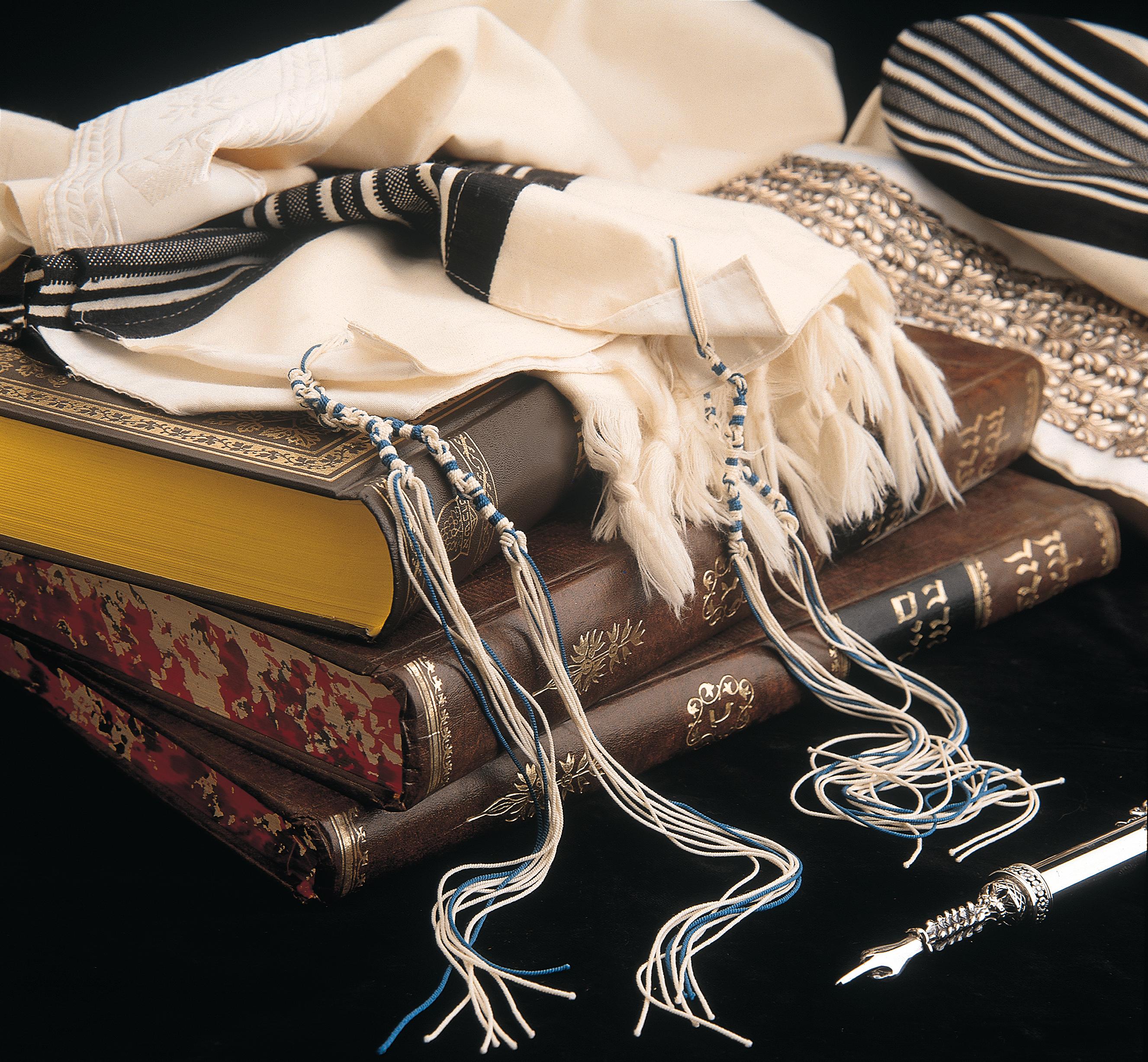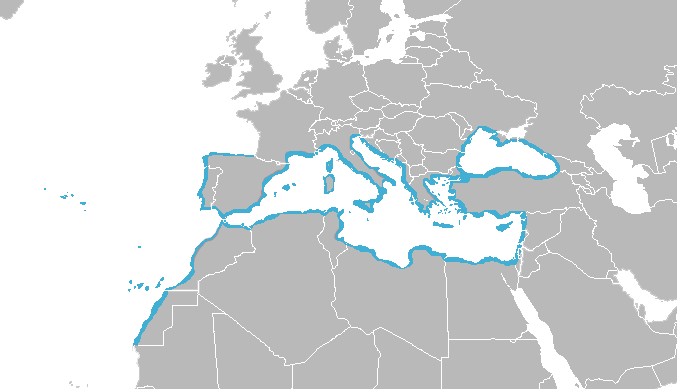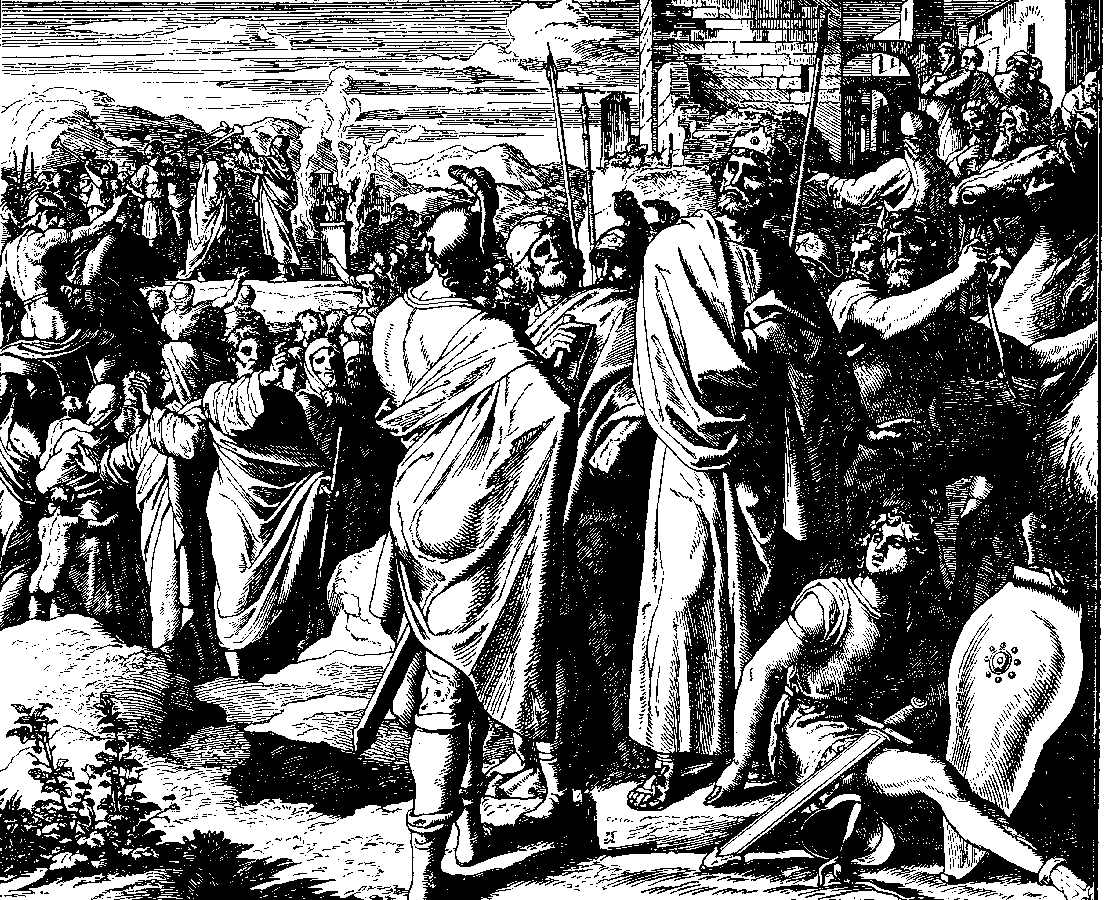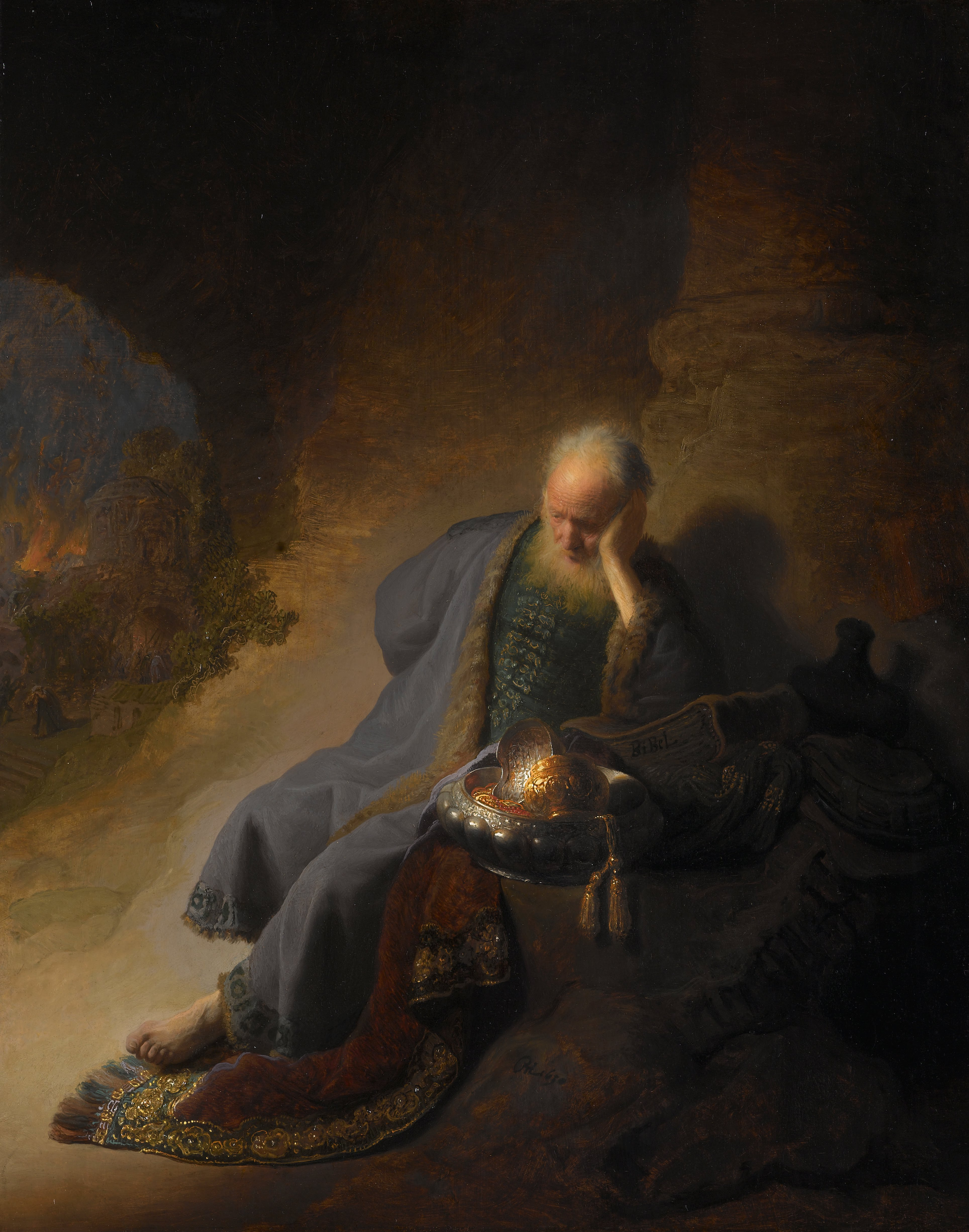|
Tekhelet
''Tekhelet'' ( ''təḵēleṯ''; also transliterated ''tekheleth'', ''t'chelet'', ''techelet'', and ''techeiles'') is a highly valued blue dye that held great significance in history of the Mediterranean region, ancient Mediterranean civilizations. In the Hebrew Bible and Jewish tradition, tekhelet is used to color the ''tzitzit'' (fringe (trim), fringes) attached to the corners of four-cornered garments, including the tallit, and historically in the clothing of the High Priest of Israel and tapestries in the Tabernacle. The Bible does not specify the source or production method of tekhelet, but rabbinic literature records that it could only be derived from a marine animal known as the ''ḥillāzon'' (Hebrew: ). However, the knowledge of tekhelet production was lost during the Middle Ages, leading to the omission of tekhelet from tzitzit. In recent times, many Jews believe that experts have identified the ''ḥillāzon'' as the snail ''Hexaplex trunculus'' (historically cl ... [...More Info...] [...Related Items...] OR: [Wikipedia] [Google] [Baidu] [Amazon] |
Tzitzit
''Tzitzit'' ( ''ṣīṣīṯ'', ; plural ''ṣīṣiyyōṯ'', Ashkenazi Hebrew, Ashkenazi: '; and Samaritan Hebrew, Samaritan: ') are specially knotted ritual Fringe (trim), fringes, or tassels, worn in antiquity by Israelites and today by observant Jews and Samaritans. are usually attached to the four corners of the ''tallit gadol'' (prayer shawl), usually referred to simply as a or ; and ''tallit katan'' (everyday undershirt). Through synecdoche, a may be referred to as . Etymology The word may derive from the semitic root, Hebrew root [n-ts-h]. shares this root with the Hebrew for 'lock of hair'. For example, in the Book of Ezekiel an angel grabs the prophet "by the of [his] head;" he could be said to be "dragged by his hair." A popular etymological interpretation of derives from another word which shares this root. ( 'budding flower') may once have referred to floral ornamentation on clothing. One can hear distinct similarities with contemporaneous Akkadian lan ... [...More Info...] [...Related Items...] OR: [Wikipedia] [Google] [Baidu] [Amazon] |
Tallit
A tallit, taleth, or tallis is a fringed garment worn as a prayer shawl by religious Jews. The tallit has special twined and knotted fringe (trim), fringes known as ''tzitzit'' attached to its four corners. The cloth part is known as the ''beged'' ("garment") and is usually made from wool or cotton, although silk is sometimes used for a ''tallit gadol''. The term is, to an extent, ambiguous. It can refer either to the ''tallit katan'' ("small tallit") item worn over or under clothing (commonly referred to as "''tzitzit''"), or to the ''tallit gadol'' ("big tallit") worn over the outer clothes during Shacharit—the morning Jewish prayer service—and all of the Yom Kippur prayer services. The term "tallit" alone typically refers to the ''tallit gadol''. There are diverse traditions regarding the age at which a ''tallit gadol'' is first used, including within Orthodox Judaism. In some Sephardic Jews, Sephardic Orthodox communities, young boys wear a tallit even before becoming '' ... [...More Info...] [...Related Items...] OR: [Wikipedia] [Google] [Baidu] [Amazon] |
Hexaplex Trunculus
''Hexaplex trunculus'' (previously known as ''Murex trunculus'', ''Phyllonotus trunculus'', or the banded dye-murex) is a medium-sized sea snail, a marine gastropod mollusk in the family Muricidae, the murex shells or rock snails. It is included in the subgenus ''Trunculariopsis''. This species is a group of opportunist predatory snails that are known to attack their prey in groups. What is peculiar about this specific species is that they show no preference for the size of their prey, regardless of their hunger levels. The snail appears in fossil records dating between the Pliocene and Quaternary periods (between 3.6 and 0.012 million years ago). Fossilized shells have been found in Morocco, Italy, and Spain. This sea snail is historically important because its hypobranchial gland secretes a mucus used to create a distinctive purple-blue indigo dye. Ancient Mediterranean cultures, including the Minoans, Canaanites/Phoenicians and classical Greeks created dyes from the sna ... [...More Info...] [...Related Items...] OR: [Wikipedia] [Google] [Baidu] [Amazon] |
Tabernacle
According to the Hebrew Bible, the tabernacle (), also known as the Tent of the Congregation (, also Tent of Meeting), was the portable earthly dwelling of God used by the Israelites from the Exodus until the conquest of Canaan. Moses was instructed at biblical Mount Sinai, Mount Sinai to construct and transport the tabernacle with the Israelites on their journey through the wilderness and their subsequent conquest of the Promised Land. After 440 years, Solomon's Temple in Jerusalem superseded it as the dwelling-place of God. The main source describing the tabernacle is the biblical Book of Exodus, specifically Exodus 25–31 and 35–40. Those passages describe an inner sanctuary, the Holy of Holies, created by the veil suspended by four pillars. This sanctuary contained the Ark of the Covenant, with its cherubim-covered mercy seat. An outer sanctuary (the "Holy Place") contained a gold lamp-stand or candlestick. On the north side stood a table, on which lay the showbread. On th ... [...More Info...] [...Related Items...] OR: [Wikipedia] [Google] [Baidu] [Amazon] |
Solomon's Temple
Solomon's Temple, also known as the First Temple (), was a biblical Temple in Jerusalem believed to have existed between the 10th and 6th centuries Common Era, BCE. Its description is largely based on narratives in the Hebrew Bible, in which it was commissioned by biblical king Solomon before being destroyed during the Siege of Jerusalem (587 BC), Siege of Jerusalem by Nebuchadnezzar II of the Neo-Babylonian Empire in 587 BCE. No excavations are allowed on the Temple Mount, and no positively identified remains of the destroyed temple have been found. Most modern scholars agree that the First Temple existed on the Temple Mount in Jerusalem by the time of the Babylonian siege, and there is significant debate among scholars over the date of its construction and the identity of its builder. The Hebrew Bible, specifically within the Books of Kings, Book of Kings, includes a detailed narrative about the construction's ordering by Solomon, the penultimate ruler of the Kingdom of Israel ... [...More Info...] [...Related Items...] OR: [Wikipedia] [Google] [Baidu] [Amazon] |
Jewish Tradition
"Unprintworthy" redirects are redirect pages on Wikipedia that aid online navigation, but would have little or no value as pointers to target articles in a hard-copy book. The name of a redirect may be unprintworthy for a number of reasons, including being nearly identical to the name of the target page, containing typographical errors, or not being encyclopedic. Redirects are not unprintworthy just because the name may be offensive to some, unless the name is also not encyclopaedic. {{Collapsible large category TOC Wikipedia redirects ... [...More Info...] [...Related Items...] OR: [Wikipedia] [Google] [Baidu] [Amazon] |
Asher Ben Jehiel
Asher ben Jehiel (, or Asher ben Yechiel, sometimes Asheri) (1250 or 1259 – 1327) was an eminent rabbi and Talmudist best known for his abstract of Talmudic law. He is often referred to as Rabbenu Asher, “our Rabbi Asher” or by the Hebrew acronym for this title, the Rosh (). His yahrzeit is on 9 Cheshvan. Biography The Rosh was probably born in Cologne, Holy Roman Empire, and died in Toledo. His family was prominent for learning and piety, his father Yechiel was a Talmudist, and one of his ancestors was Rabbi Eliezer ben Nathan (the ''RaABaN''). Asher had eight sons, the most prominent of whom were Jacob (author of the ''Arba'ah Turim'') and Judah. In 1286, King Rudolf I had instituted a new persecution of the Jews, and the great teacher of the Rosh, Rabbi Meir of Rothenburg, left Germany but was captured and imprisoned. The Rosh raised a ransom for his release, but Rabbi Meir refused it, for fear of encouraging the imprisonment of other rabbis. Thereafter the Rosh a ... [...More Info...] [...Related Items...] OR: [Wikipedia] [Google] [Baidu] [Amazon] |
2 Chronicles
The Book of Chronicles ( , "words of the days") is a book in the Hebrew Bible, found as two books (1–2 Chronicles) in the Christian Old Testament. Chronicles is the final book of the Hebrew Bible, concluding the third section of the Jewish Tanakh, the Ketuvim ("Writings"). It contains a genealogy starting with Adam and a history of ancient Judah and Israel up to the Edict of Cyrus in 539 BC. The book was translated into Greek and divided into two books in the Septuagint in the mid-3rd century BC. In Christian contexts Chronicles is referred to in the plural as the Books of Chronicles, after the Latin name given to the text by Jerome, but is also referred to by its Greek name as the Books of Paralipomenon. In Christian Bibles, they usually follow the two Books of Kings and precede Ezra–Nehemiah, the last history-oriented book of the Protestant Old Testament. Summary The Chronicles narrative begins with Adam, Seth and Enosh, and the story is then carried forward, almost e ... [...More Info...] [...Related Items...] OR: [Wikipedia] [Google] [Baidu] [Amazon] |
Mordechai
Mordecai (; also Mordechai; , IPA: ) is one of the main personalities in the Book of Esther in the Hebrew Bible. He is the cousin and guardian of Esther, who became queen of Persia under the reign of Ahasuerus (Xerxes I). Mordecai's loyalty and bravery are highlighted in the story as he helps Esther foil the plot of Haman, the king's vizier, to exterminate the Jewish people. His story is celebrated in the Jewish holiday of Purim, which commemorates his victory. One theory frequently discussed in scholarship suggests that the Book of Esther serves as an etiology for Purim, with Mordecai and Esther representing the Babylonian gods Marduk and Ishtar in a historicized Babylonian myth or ritual. The identification of Mordecai in the Book of Esther with a Persian official named "Marduka" mentioned in an inscription from the reign of Xerxes is debated, with some scholars supporting the connection while others find it unconvincing because the name was common. Biblical account Mordeca ... [...More Info...] [...Related Items...] OR: [Wikipedia] [Google] [Baidu] [Amazon] |
Book Of Ezekiel
The Book of Ezekiel is the third of the Nevi'im#Latter Prophets, Latter Prophets in the Hebrew Bible, Tanakh (Hebrew Bible) and one of the Major Prophets, major prophetic books in the Christian Bible, where it follows Book of Isaiah, Isaiah and book of Jeremiah, Jeremiah. According to the book itself, it records six visions of the Biblical prophet, prophet Ezekiel, exiled in Babylon, during the 22 years from 593 to 571 BC. It is the product of a long and complex history and does not necessarily preserve the words of the prophet. The visions and the book are structured around three themes: (1) judgment on Israel (chapters 1–24); (2) judgment on the nations (chapters 25–32); and (3) future blessings for Israel (chapters 33–48). Its themes include the concepts of the Divine presence#Judaism, presence of God, purity, Israel as a divine community, and individual responsibility to God. Its later influence has included the development of Mysticism, mystical and apocalyptic tr ... [...More Info...] [...Related Items...] OR: [Wikipedia] [Google] [Baidu] [Amazon] |
Book Of Jeremiah
The Book of Jeremiah () is the second of the Latter Prophets in the Hebrew Bible, and the second of the Prophets in the Christian Old Testament. The superscription at chapter Jeremiah 1#Superscription, Jeremiah 1:1–3 identifies the book as "the words of Jeremiah son of Hilkiah". Of all the prophets, Jeremiah comes through most clearly as a person, ruminating to his scribe Baruch ben Neriah, Baruch about his role as a servant of God with little good news for his audience. His book is intended as a message to the Jews in exile in Babylon, explaining the disaster of exile as God's response to Israel's pagan worship: the people, says Jeremiah, are like an unfaithful wife and rebellious children, their infidelity and rebelliousness made judgment inevitable, although restoration and a new covenant are foreshadowed. Authentic oracles of Jeremiah are probably to be found in the poetic sections of Jeremiah 1, chapters 1 through Jeremiah 25, 25, but the book as a whole has been heavily ... [...More Info...] [...Related Items...] OR: [Wikipedia] [Google] [Baidu] [Amazon] |
Book Of Esther
The Book of Esther (; ; ), also known in Hebrew language, Hebrew as "the Scroll" ("the wikt:מגילה, Megillah"), is a book in the third section (, "Writings") of the Hebrew Bible. It is one of the Five Megillot, Five Scrolls () in the Hebrew Bible and later became part of the Christian Old Testament. The book relates the story of a Jews, Jewish woman in Achaemenid Empire, Persia, born as Hadassah but known as Esther, who becomes queen of Persia and thwarts a genocide of her people. The story takes place during the reign of King Ahasuerus in the Achaemenid Empire, First Persian Empire. Queen Vashti, the wife of King Ahasuerus, is banished from the court for disobeying the king's orders. A beauty pageant is held to find a new queen, and Esther, a young Jewish woman living in Persia, is chosen as the new queen. Esther's cousin Mordecai, who is a Jewish leader, discovers a plot to kill all of the Jews in the empire by Haman, one of the king's advisors. Mordecai urges Esther to ... [...More Info...] [...Related Items...] OR: [Wikipedia] [Google] [Baidu] [Amazon] |







